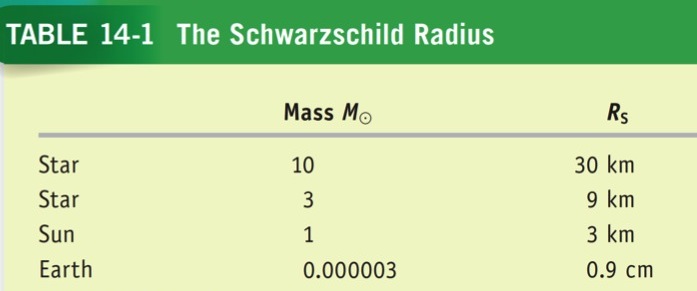Einstein's General Relativity also predicts the existence of an event horizon, within which nothing, including photons, can escape to the outside world.

[Black holes are just objects with mass confined within the corresponding event horizon, far away from which nothing is unusual.]
RS = 2GM / c2 ≈ 3 km (M/M⊙)


[Some key words in this journey: Time dilation; Gravitational redshift; Tidal distortion, friction, and disruption]
Recall the mass estimate using binaries, in particular spectroscopic binaries. Some binaries are found to possess a massive member but invisible optically. Most of them, furthermore, are X-ray sources with significant variability.


[Black holes may reveal themselves by X-ray emission of their hot accretion disks. Sometimes they also emit radio and gamma-ray emissions from a jet.]
Some stellar-mass black holes


[M82 X-1 is an Ultra-Luminous X-ray sources (ULX), which is believed to host a 500 M⊙ black hole.]

[Jacob Bekestein and Steven Hawking proved that the Hawking radiation can be formulated as blackbody radiation with a certain temperature. The wavelength of maximum radiation is 16 RS. The temperature of a black hole with 1 M⊙ corresponds to 6 x 10-8 K. The temperature is inversely proportional to the mass. Therefore the process is a run-away one: black holes will evaporate! It takes 1.5 x 1010 years for a 1010kg black hole to evaporate, 1062 years for 5M⊙, and 1080 years for 5 million M⊙.]